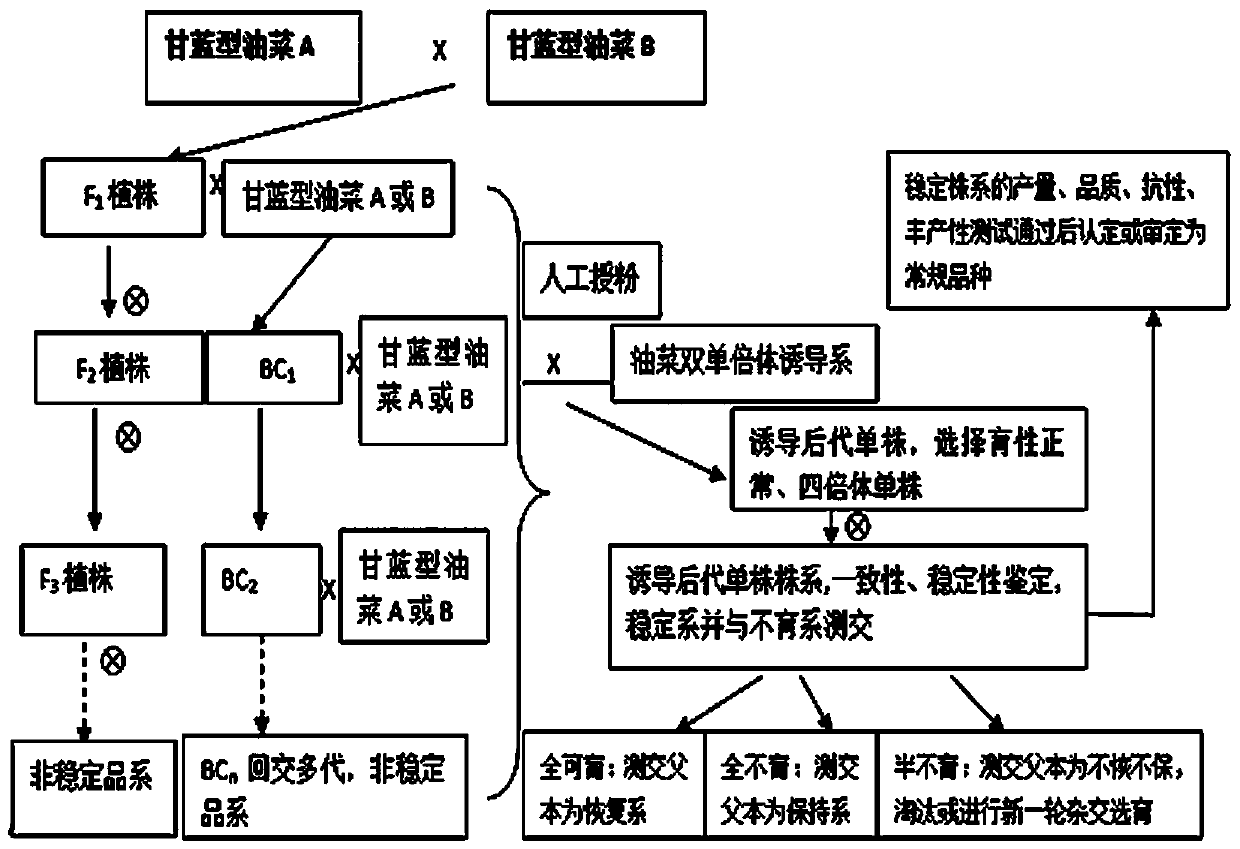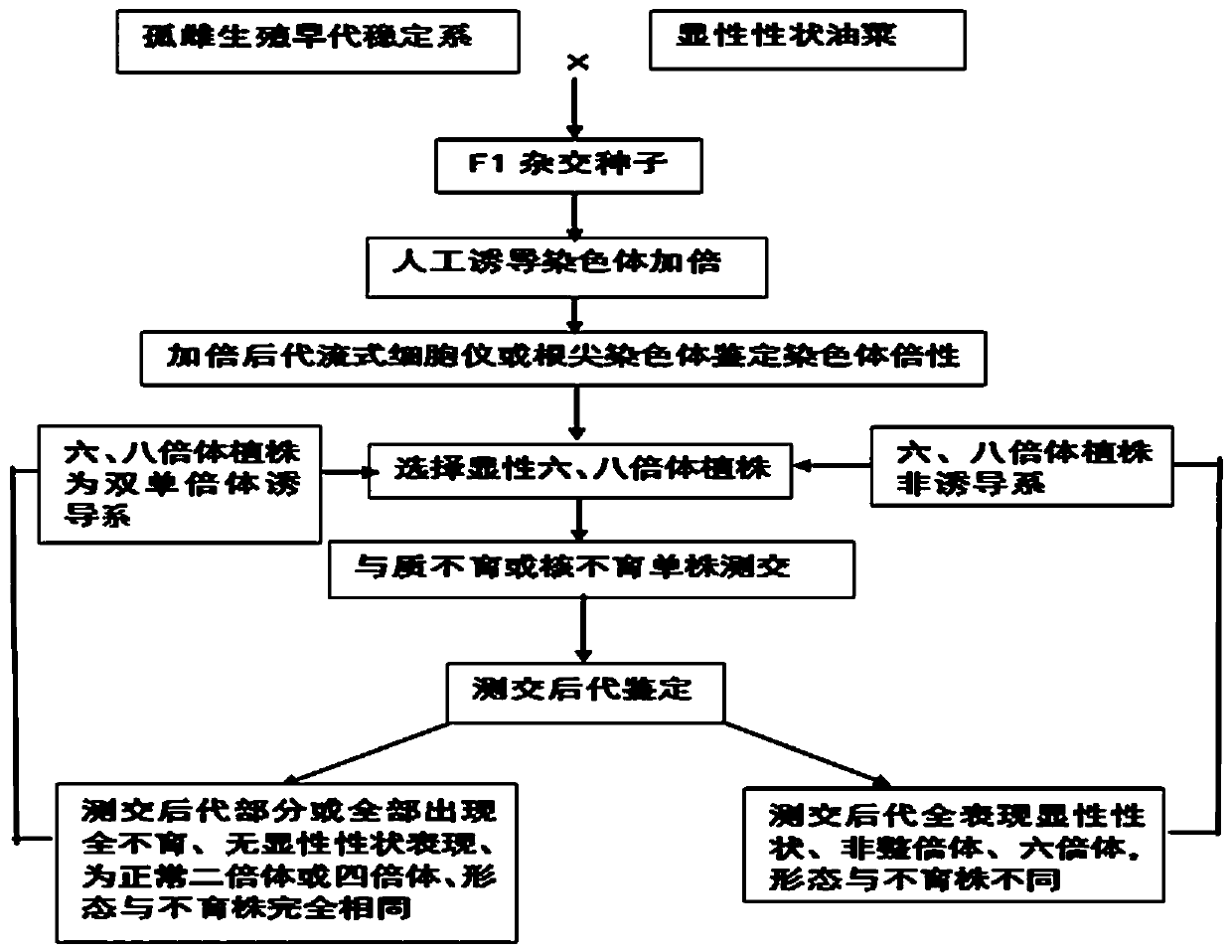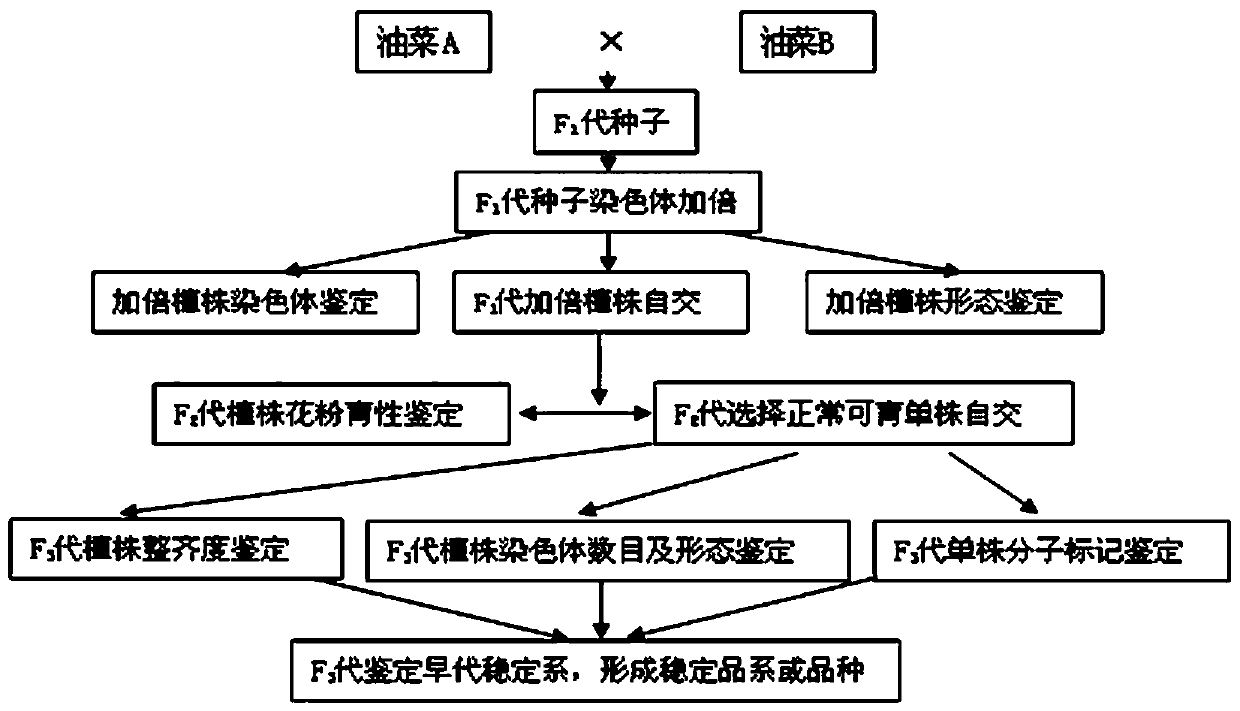Method for Breeding Brassica napus Varieties and Rapeseed Rapeseed Double Haploid Inducer Lines
A technology of Brassica napus and double haploids, which is applied in botany equipment and methods, plant genetic improvement, angiosperms/flowering plants, etc., can solve the problem of low induction efficiency, achieve excellent lodging resistance and long time period , the effect of increasing production
- Summary
- Abstract
- Description
- Claims
- Application Information
AI Technical Summary
Problems solved by technology
Method used
Image
Examples
Embodiment 1
[0082] see figure 1 , figure 2 , Figure 5 , Figure 7 , the Brassica oleracea double-low material "925100" was crossed with the recovery material "2150×Lijinte", and selected excellent single plants were self-crossed to F 9 Generations are still separated, F 10 Artificial emasculation during generation, and pollination with rapeseed double haploid induction line Y3380 obtained by the applicant, to obtain a large number of induced progeny seeds. f 11 The offspring (induced offspring) were planted and tested by flow cytometry, the breeding performance was normal, the ploidy (tetraploid) was normal, and there was no dominant trait of the induced line (dwarf) plants. The line was testcrossed with the polima cytoplasmic sterile line "Rong A0068", and the offspring of the testcross were all fertile and the traits of the individual plants within the line were consistent, indicating that the line was a restorer line. Therefore, a stable cytoplasmic male sterile restorer line ...
Embodiment 2
[0160] see figure 1 , figure 2 , Figure 5 , Figure 9 , the early-generation stable line P3-2 of Brassica napus was crossed with Zhongshuang 11, the hybrid offspring F1 was artificially emasculated, pollinated with the rapeseed double haploid induction line Y3380 obtained by the applicant, and the offspring were induced to self-bagging, F 2 The generation (induced offspring) was planted and flow cytometry was performed, the selection was normal, the ploidy (tetraploid) was normal, and there was no dominant trait (dwarf) of the induced line. Single bagging self-crossing of plants, F 3 Purity identification was carried out in several generations, among which the stable line 4653 was selected for test crossing with the polimaCMS cytoplasmic sterile line "Rong A0068", and the offspring of the test cross were all sterile, indicating that the induced stable line 4653 was a maintainer line, and the polimaCMS cytoplasmic maintainer line had a high oil content (more than 49%), lo...
Embodiment 3
[0162] see figure 1 , figure 2 , Figure 4 , Figure 10 , radish cytoplasmic ogura CMS type, whose restorer genes are not easy to obtain Brassica napus Chuanyou 36 is a radish cytoplasmic three-line hybrid rapeseed approved in the upper, middle and lower reaches of the Yangtze River in Sichuan Province, which contains radish cytoplasmic restorer genes. Chuanyou 36 was crossed with P3-2 to obtain aggregate hybrid F1, and F1 was emasculated with rapeseed double haploid induction line Y3560 obtained by the applicant for pollination. The F2 generation (induced offspring) was planted and subjected to flow cytometry detection, the selection was normal, the ploidy (tetraploid) was normal, and there was no dominant trait (dwarf) of the induced line. The plant was self-bagged, and the F3 generation was carried out. The purity was identified, and the stable strain 4707 was obtained. At the same time, the pollen of 4707 was tested with the stable radish cytoplasmic male sterile line...
PUM
 Login to View More
Login to View More Abstract
Description
Claims
Application Information
 Login to View More
Login to View More - R&D Engineer
- R&D Manager
- IP Professional
- Industry Leading Data Capabilities
- Powerful AI technology
- Patent DNA Extraction
Browse by: Latest US Patents, China's latest patents, Technical Efficacy Thesaurus, Application Domain, Technology Topic, Popular Technical Reports.
© 2024 PatSnap. All rights reserved.Legal|Privacy policy|Modern Slavery Act Transparency Statement|Sitemap|About US| Contact US: help@patsnap.com










